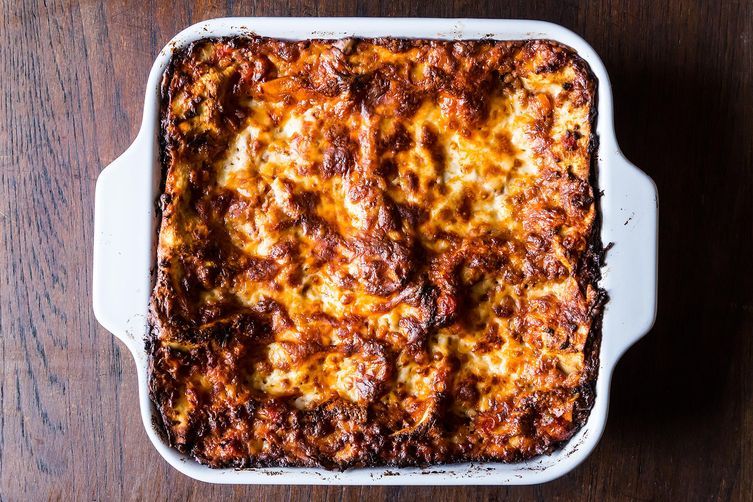
On our new weekly podcast, two friends separated by the Atlantic take questions and compare notes on everything from charcuterie trends to scone etiquette.
Listen NowPopular on Food52
5 Comments
Greenstuff
June 21, 2013
My understanding has been that there are no figpeckers (garden warblers) or other small birds in Italy, as the Italians have eaten every one!
ryanm
June 21, 2013
Not sure this sounds "wholly unappetizing at best," considering that pork (aka sow) belly is pretty delicious and is not at all an unusual ingredient to mix with fish. Pepper, eggs, pine nuts, and lovage are also perfectly fine ingredients. Raisin wine I'm not familiar with, though might be similar to port (yum). Definitely not lasagna alla bolognese--though neither is most lasagna we come across today--but I for one would be interested in trying the dish.
Gabriella P.
June 21, 2013
A friend of mine made the dish for a food history a few years ago and I sampled it - I can attest the aroma/texture was horrible! (I still have nightmares about what the filling looked like.) But the version from Liber de Coquina wasn't half bad. Definitely a fun project to try out.
pierino
June 22, 2013
The best lasagne I've ever dined on in my life have been in Emilia-Romagna. Pasta rolled out to the maximum thinness. The sauce (sauce bolognese) was layered with discretion. So unlike the huge amounts of glop that Americans associate with Italian (i.e. Italian-American) pastas.
vanessa.b
June 24, 2013
"Horrible" and "unappetizing" are understatements. I would barely call it food.


See what other Food52 readers are saying.